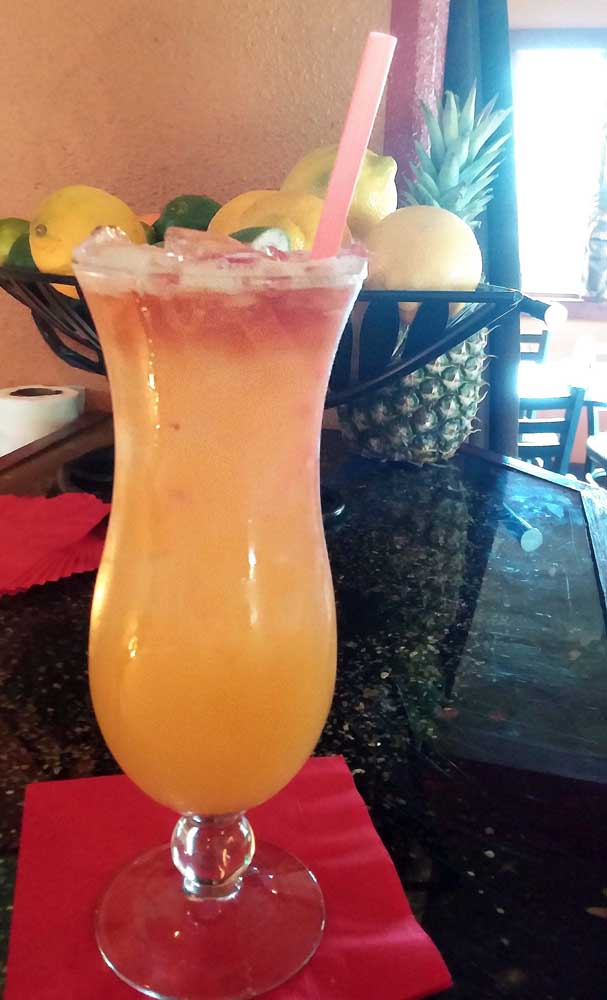Castaways Restaurant & Tiki Bar Drawing inspiration from across the globe, Castaways is a North Coast gem
Published 4:00 am Thursday, May 21, 2015

- The Hurricane cocktail is a tangy mix of rum and tropical fruit juices þÄî pineapple, lime and tangerine.
While taking a few moments to make the rounds and chat with diners just before dessert, Castaways Restaurant & Tiki Bar chef and owner Josh Tuckman voiced something that’s been on my mind since even before becoming The Mouth: As restaurants in tourist destinations can be less dependent on repeat business, some drag their feet.
Trending
“We don’t do that,” Tuckman said.
He wasn’t lying. Castaways is marvelous. A splendid fusion of casual atmosphere and inspired cooking, it is one of the North Coast’s culinary gems.
With a modicum of carved, Polynesian masks, Castaways identifies a tiki bar. But drawing regions and styles from across the globe, it is so much more. The sweet tiki drinks are paired with equally colorful, often fruit-tinged dishes drawing from Caribbean, Creole, Thai, French, Italian and Japanese traditions. But rather than a smorgasbord of incongruence, the menu dovetails seamlessly, the product of thoughtful curation.
Trending
“I wanted to create a place that you could eat at seven nights a week,” Tuckman said, “where each night you could have something different.” He has succeeded absolutely. Castaways is equally suited for a celebratory gathering, romantic rendezvous, or simply a fine evening meal.
Tucked in a tiny, repurposed home near Cannon Beach’s north entrance, Castaways is known for being tough to get a table, especially on sunny weekends. Arriving on a Thursday evening around 7 p.m. without a reservation, my companion and I faced a 20-minute wait but found a spot at the bar in the meantime.
Deciding what to drink was tantalizingly difficult, as all the specialty cocktails, including infusions made with local spirits and berries, made mouthwatering overtures. In observance of the tiki spirit, we went with a Hurricane ($9) and, on the recommendation of a regular, a Pineapple-Chili Margarita ($8.50). In traditional tiki fashion, each was made with a head-spinning number of ingredients, including a spoonful of sugar each (though neither was too sweet). The Hurricane was a tangy mix of rum and tropical fruit juices — pineapple, lime, tangerine — and the margarita was salty, savory and with house-infused pineapple-jalapeño tequila, not too spicy. Each was voluminous and subtly strong.
At the central bar the room was a bit loud, due in part to a few boisterous children, but when we got our table the decibels declined. Between sipping our cocktails and gazing at the art, we decided to share the Tiki Salad ($7) and Honey Orange Coconut Prawns ($13.50).
The salad — mixed greens, goat cheese, dried cranberries, spiced walnuts and a balsamic vinaigrette — was familiar and well executed, a reminder that fine ingredients speak well for themselves. The goat cheese was mild, the cranberries were supple, and the spiced walnuts were absolutely fresh, likely made that day in-house.
The Honey Orange Coconut Prawns, meanwhile, were absolutely divine. The large prawns, breaded with coconut and fried, were crispy, sweet and sumptuous. They were my first experience with coconut breading and they won’t be my last. The texture and taste, hearty but sans grease, was sublime. So too was the plating, atop a sprinkling of finely diced red and yellow peppers, green chives and raw coconut shreds. My sensory memory of these prawns resounds almost photographically. I can’t wait to have them again.
Same goes for Nawlins Style Jambalya ($18). Served on a spice scale from 1-to-4, I opted for a 2, the most commonly ordered. The heat level was appropriate, blooming at the back of the throat than the tip of the tongue. As for the seasoning that colored the savory red broth, the mix was exquisite. The dish was full of slow-cooked chicken, sweet peppers, onions, Andouille sausage (though there could’ve been a bit more) and dotted with blueberries that I initially assumed were olives. In another twist, it was served atop light Indian basmati rice (rather than a more traditional sticky blend). Together it was peppy, rich and slyly elegant.
My companion had the Big Kahuna Ahi Tuna ($24), and it was the only slight misstep of the evening. Herb-crusted and seared, something went awry — the edges did not have a particularly distinct texture or taste, and the raw fish center was dry. Everything else on the plate — particularly the roasted zucchini and yellow squash — were perfectly, minimally prepared, again allowing the fine ingredients to shine. A myriad of sauces and accouterments — including roe and a blazing wasabi reduction — offered Japanese inflection.
For desert we shared the Mango Flambé ($8.50), a dish whose disheveled look belied its stirring mix of hot, glazed, dark, viscous sugars, long cut, tangy mangoes and strawberries swirling around cold coconut ice cream.
As we noshed, chef Tuckman engaged another customer. He wanted to share, but also to listen. Clearly these interactions were about more than hearing himself talk — he sought to know his customers, where they came from, what they liked and what they didn’t. He spoke too of his own inspiration.
“If I didn’t want to keep learning,” Tuckman said, “I’d be done.”
Fortunately for us, he’s still hungry. And, as rumor has it, Tuckman and Castaways may soon be expanding. More on that as it develops. In the meantime, I’ll be dreaming about those coconut prawns.









